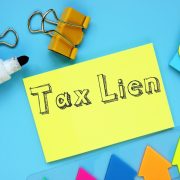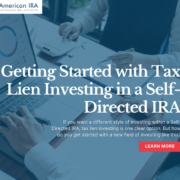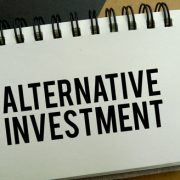Can You Use a Self-Directed IRA for Tax Liens?
Retirement investors have a basic question. Just how many different assets can they include in a retirement portfolio? As it turns out, the answer is simple: quite a lot. You’ll need to use a Self-Directed IRA with the right custodian. A good custodian ensures your IRA can handle the paperwork necessary. It’s not as complicated as it sounds, but it does require an understanding of how the process works. To that end, many investors start to wonder how many investment assets they can keep in a retirement account: and are Tax Liens one of them?
Tax Liens are unique investment vehicles in which an investor puts up the money that is own on a property tax lien, taking over that debt. This then makes the investor capable of collecting the money owed on the lien—and failing that, the investor may even be able to take over the underlying property in question. But is it possible to keep one within a Self-Directed IRA, and if so, what do investors need to know?
Investing in Tax Liens with a Self-Directed IRA
Tax lien investing can often sound more complicated than it really is. So let’s first clear the air by explaining tax lien investing. Investors can purchase Tax Liens—the liens that local governments place on property tax payers who haven’t been able to pay their taxes. This, in turn, makes sure that the state gets the money that is owed to it. The investor can then collect on the money owed via the tax lien or even potentially foreclose on the property.
This option gives investors the possibility to exercise some creativity. In the event of a foreclosure, an investor can either sell the property (potentially at a profit) or hold the property and rent it out. Then the tax lien becomes an asset of real estate. Real estate, of course, is also allowed within a Self-Directed IRA. For this reason, many people associate tax lien investing with real estate investing, even though the two don’t always strictly overlap.
Can You Use a Self-Directed IRA?
Because an investor can collect high interest rates on the payments to a tax lien, it only makes sense that many investors will seek out a Self-Directed IRA to keep those payments within a tax-advantaged account. This can help an investor build a large sum of money within an account if they make the right decisions. But that’s the key for investors to remember: the decisions within a Self-Directed IRA are yours. A Self-Directed IRA custodian, like American IRA, is only the administrator on the account. That means we are limited to paperwork and executing trades on behalf of the account. But we don’t offer financial advice. That’s up to you and the team you hire—if you do hire a team—to handle due diligence with specific investments like Tax Liens.
That’s why we encourage so many people to educate themselves about issues like Tax Liens and other types of investing available through Self-Directed IRAs. By educating yourself, you’ll not only better understand the options available to you, but you’ll be better equipped to use your Self-Directed IRA to your advantage.
Interested in learning more about Self-Directed IRAs? Contact American IRA, LLC at 866-7500-IRA (472) for a free consultation. Download our free guides or visit us online at www.AmericanIRA.com.








